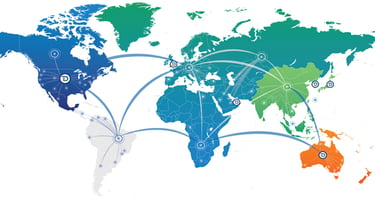In today's digital era, optimizing website performance is critical for businesses across the globe....
Case Study: The Impact of CDNs on SaaS Performance
Imagine this: your SaaS platform, the backbone of many businesses' daily operations, suddenly slows to a crawl, frustrating users and prompting them to consider alternatives. This nightmare scenario is why content delivery networks (CDNs) have become indispensable for SaaS companies worldwide. This article delves into how CDNs, with a spotlight on providers like Amazon CloudFront and BlazingCDN, have transformed SaaS performance, enabling robust, scalable, and reliable service delivery.
The Crucial Role of CDNs in SaaS
In the dynamic realm of SaaS, performance is not just a feature—it's a necessity. CDNs have become the silent heroes, ensuring that services are delivered swiftly and reliably to users across the globe. By caching content closer to the user, CDNs significantly reduce latency, boost loading times, and enhance the overall user experience.
Latency is the time taken for data to travel from the user to the server and back. For a SaaS application, high latency can be detrimental, causing slow response times that frustrate users. CDNs mitigate this by caching data at strategically located edge servers. Amazon CloudFront, for example, boasts a vast network of edge locations that deliver content rapidly, reducing latency and improving application performance.
One of the standout advantages of CDNs is their ability to handle traffic spikes efficiently. During peak times, the demand on your SaaS application can skyrocket. CDNs scale automatically, distributing the load across multiple servers. This ensures that the application remains responsive, providing a seamless experience for end-users.
Real-World Impact: Case Studies
Case Study: FastTrack - Enhancing User Experience
FastTrack, a project management SaaS, faced significant challenges with response times during peak usage hours. By integrating Amazon CloudFront into their infrastructure, they achieved remarkable improvement in performance. The CDN's edge servers distributed the load efficiently, reducing latency by 40% and ensuring a consistent user experience irrespective of geographical location.
Case Study: HealthGrid – Scaling with Confidence
HealthGrid, an eHealth SaaS platform, required robust scalability to cope with fluctuating user demand. By leveraging BlazingCDN, HealthGrid could manage high traffic volumes effortlessly. The CDN's infrastructure allowed HealthGrid to scale dynamically, ensuring that their service remained fast and reliable even during sudden usage spikes.
Security Enhancements
CDNs do not just improve performance—they also bolster security. Modern CDNs offer built-in DDoS protection, web application firewalls (WAF), and SSL/TLS encryption, ensuring data integrity and security. For instance, BlazingCDN's advanced security features protect SaaS applications from malicious attacks, keeping data secure and services uninterrupted.
SSL/TLS Encryption
Data security is paramount for SaaS applications, especially those handling sensitive user information. CDNs facilitate SSL/TLS encryption, ensuring data is encrypted during transit. This not only protects data but also boosts user trust, as secure connections are a critical component of service reliability.
The Cost-Benefit Analysis
Adopting a CDN involves costs, but the return on investment (ROI) is compelling. Improved performance, enhanced security, and scalability can significantly reduce operational costs and increase user satisfaction. For SaaS companies, this translates to higher retention rates and customer loyalty.
With CDNs handling content delivery and security, SaaS companies can focus on core service improvements and innovation. The operational efficiency gained by offloading these tasks to a CDN provider like BlazingCDN results in cost savings and resource optimization.
SaaS success hinges on user satisfaction. Faster load times, reliable performance, and enhanced security directly contribute to a positive user experience. The investment in a CDN is justified by increased user engagement and retention.
Future Trends: The Evolution of CDNs in SaaS
The CDN landscape is continuously evolving, driven by advancements in technology and increasing user expectations. Future trends point towards more intelligent and adaptive CDNs capable of real-time optimization and enhanced performance metrics.
Artificial intelligence (AI) and machine learning are set to revolutionize CDN technologies. Predictive analytics can optimize content delivery routes, while real-time data processing can adjust caching strategies dynamically, further reducing latency and improving efficiency.
Edge Computing
Edge computing takes CDN capabilities to the next level by processing data closer to the user. This approach reduces the need for data to travel to centralized servers, significantly cutting down latency and enabling real-time processing for critical applications.
In conclusion, adopting a CDN is a strategic move for any SaaS provider looking to enhance performance, scalability, and security. BlazingCDN, for instance, offers tailored solutions that can transform your application delivery and user experience. Explore how BlazingCDN can revolutionize your SaaS platform today.
For more in-depth comparisons and pricing models, check out this comprehensive guide.
What has your experience been with CDNs? Share your stories in the comments below or join the discussion on our social media channels!



